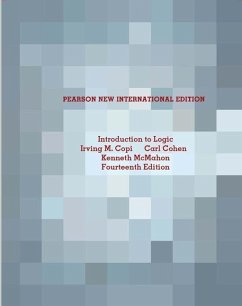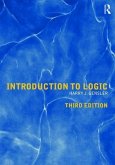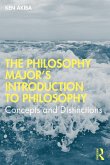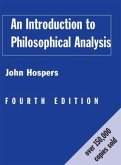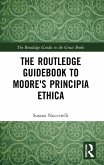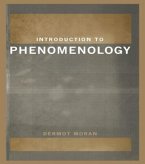The 14th Edition of Introduction to Logic, written by Copi, Cohen & McMahon, is dedicated to the many thousands of students and their teachers - at hundreds of universities in the United States and around the world - who have used its fundamental methods and techniques of correct reasoning in their everyday lives.
To those who have not previously used or reviewed Introduction to Logic we extend the very warmest welcome. Please join us and our international family of users! Let us help you teach students the methods and principles needed in order to distinguish correct from incorrect reasoning.
For, Introduction to Logic is a proven textbook that has been honed through the collaborative efforts of many scholars over the last five decades. Its scrupulous attention to detail and precision in exposition and explanation is matched by the greatest accuracy in all associated detail. In addition, it continues to capture student interest through its personalized human setting and current examples.
Take an online tour today: http://www.pearsonhighered.com/showtell/copi_0205820379/web
NEW! Pearson's Reading Hour Program for Instructors
Interested in reviewing new and updated texts in Philosophy?
Click on the below link to choose an electronic chapter to preview…
Settle back, read, and receive a Penguin paperback for your time!
http://www.pearsonhighered.com/readinghour/philosophy
Features + Benefits
Create a Custom Text: For enrollments of at least 25, create your own textbook by combining chapters from best-selling Pearson textbooks and/or reading selections in the sequence you want. To begin building your custom text, visit www.pearsoncustomlibrary.com. You may also work with a dedicated Pearson Custom editor to create your ideal text–publishing your own original content or mixing and matching Pearson content. Contact your Pearson Publisher’s Representative to get started.
MyLogicLab—Pearson’s easy-to-use learning management system—offers numerous resources at www.mylogiclab.com to help both students and instructors save time and improve results.
A student-friendly structure—from the introduction of basic concepts to methods of deductive reasoning to techniques of inductive logic—enables students to most easily grasp and master logical principles.
Proven pedagogical features—including visually engaging part openers, Visual Logic features that walk students through complex concepts, andOverview boxed summaries—enhance students’ learning comprehension.
Real-life examples of arguments and explanations from current controversies—such as the uses of animals in medicine, euthanasia, and school vouchers—help students apply logical principles to their everyday lives and understand their real-world significance.
A separate presentation of classical syllogistic logic and modern symbolic logic provides instructors flexibility in teaching, and allows students to makes clearer distinctions between these two types of thought.
Foreward
Preface
Acknowledgments
PART I LOGIC AND LAGUAGE
SECTION A REASONING
Chapter 1 Basic Logical Concepts
1.1 What Logic Is
1.2 Propositions and Arguments
1.3 Recognizing Arguments
1.4 Arguments and Explanations
1.5 Deductive and Inductive Arguments
1.6 Validity and Truth
Chapter 2 Analyzing Arguments
2.1 Paraphrasing Arguments
2.2 Diagramming Arguments
2.3 Complex Argumentative Passages
2.4 Problems in Reasoning
SECTION B INFORMAL LOGIC
Chapter 3 Language and Definitions
3.1 Language Functions
3.2 Emotive Language, Neutral Language, and Disputes
3.3 Disputes and Ambiguity
3.4 Definitions and Their Uses
3.5 The Structure of Definitions: Extension and Intension
3.6 Definition by Genus and Difference
Chapter 4 Fallacies
4.1 What Is a Fallacy?
4.2 Classification of Fallacies
4.3 Fallacies of Relevance
4.4 Fallacies of Defective Induction
4.5 Fallacies of Presumption
4.6 Fallacies of Ambiguity
Part II Deduction
Section A Classical Logic
Chapter 5 Categorical Propositions
5.1 The Theory of Deduction
5.2 Classes and Categorical Propositions
5.3 The Four Kinds of Categorical Propositions
5.4 Quality, Quantity, and Distribution
5.5 The Traditional Square of Opposition
5.6 Further Immediate Inferences
5.7 Existential Import and the Interpretation of Categorical Propositions
5.8 Symbolism and Diagrams for Categorical Propositions
Chapter 6 Categorical Syllogisms
6.1 Standard-Form Categorical Syllogisms
6.2 The Formal Nature of Syllogistic Argument
6.3 Venn Diagram Technique for Testing Syllogisms
6.4 Syllogistic Rules and Syllogistic Fallacies
6.5 Exposition of the Fifteen Valid Forms of the Categorical Syllogism
Appendix: Deduction of the Fifteen Valid Forms of the Categorical Syllogism
Chapter 7 Syllogisms in Ordinary Language
7.1 Syllogistic Arguments
7.2 Reducing the Number of Terms to Three
7.3 Translating Categorical Propositions into Standard Form
7.4 Uniform Translation
7.5 Enthymemes
7.6 Sorites
7.7 Disjunctive and Hypothetical Syllogisms
7.8 The Dilemma
Section B Modern Logic
Chapter 8 Symbolic Logic
8.1 Modern Logic and Its Symbolic Language
8.2 The Symbols for Conjunction, Negation, and Disjunction
8.3 Conditional Statements and Material Implication
8.4 Argument Forms and Refutation by Logical Analogy
8.5 The Precise Meaning of “Invalid” and “Valid”
8.6 Testing Argument Validity Using Truth Tables
8.7 Some Common Argument Forms
8. 8 Statement Forms and Material Equivalence
8.9 Logical Equivalence
8.10 The Three “Laws of Thought”
Chapter 9 Methods of Deduction
9.1 Formal Proof of Validity
9.2 The Elementary Valid Argument Forms
9.3 Formal Proofs of Validity Exhibited
9.4 Constructing Formal Proofs of Validity
9.5 Constructing More Extended Formal Proofs
9.6 Expanding the Rules of Inference: Replacement Rules
9.7 The System of Natural Deduction
9.8 Constructing Formal Proofs Using the Nineteen Rules of Inference
9.9 Proof of Invalidity
9.10 Inconsistency
9.11 Indirect Proof of Validity
9.12 Shorter Truth-Table Technique
Chapter 10 Quantification Theory
10.1 The Need for Quantification
10.2 Singular Propositions
10.3 Universal and Existential Quantifiers
10.4 Traditional Subject—Predicate Propositions
10.5 Proving Validity
10.6 Proving Invalidity
10.7 Asyllogistic Inference
Part III Induction
Section A Analogy and Causation
Chapter 11 Analogical Reasoning
11.1 Induction and Deduction Revisited
11.2 Argument by Analogy
11.3 Appraising Analogical Arguments
11.4 Refutation by Logical Analogy
Chapter 12 Causal Reasoning
12.1 Cause and Effect
12.2 Causal Laws and the Uniformity of Nature
12.3 Induction by Simple Enumeration
12.4 Methods of Causal Analysis
12.5 Limitations of Inductive Techniques
Section B Science and Probability
Chapter 13 Science and Hypothesis
13.1 Scientific Explanation
13.2 Scientific Inquiry: Hypothesis and Confirmation
13.3 Evaluating Scientific Explanations
13.4 Classification as Hypothesis
Chapter 14 Probability
14.1 Alternative Conceptions of Probability
14.2 The Probability Calculus
14.3 Probability in Everyday Life
Solutions to Selected Exercises
Glossary/Index
Introduction to Logic is a proven textbook that has been honed through the collaborative efforts of many scholars over the last five decades. Its scrupulous attention to detail and precision in exposition and explanation is matched by the greatest accuracy in all associated detail. In addition, it continues to capture student interest through its personalized human setting and current examples. The 14th Edition of Introduction to Logic, written by Copi, Cohen & McMahon, is dedicated to the many thousands of students and their teachers - at hundreds of universities in the United States and around the world - who have used its fundamental methods and techniques of correct reasoning in their everyday lives.
Hinweis: Dieser Artikel kann nur an eine deutsche Lieferadresse ausgeliefert werden.
To those who have not previously used or reviewed Introduction to Logic we extend the very warmest welcome. Please join us and our international family of users! Let us help you teach students the methods and principles needed in order to distinguish correct from incorrect reasoning.
For, Introduction to Logic is a proven textbook that has been honed through the collaborative efforts of many scholars over the last five decades. Its scrupulous attention to detail and precision in exposition and explanation is matched by the greatest accuracy in all associated detail. In addition, it continues to capture student interest through its personalized human setting and current examples.
Take an online tour today: http://www.pearsonhighered.com/showtell/copi_0205820379/web
NEW! Pearson's Reading Hour Program for Instructors
Interested in reviewing new and updated texts in Philosophy?
Click on the below link to choose an electronic chapter to preview…
Settle back, read, and receive a Penguin paperback for your time!
http://www.pearsonhighered.com/readinghour/philosophy
Features + Benefits
Create a Custom Text: For enrollments of at least 25, create your own textbook by combining chapters from best-selling Pearson textbooks and/or reading selections in the sequence you want. To begin building your custom text, visit www.pearsoncustomlibrary.com. You may also work with a dedicated Pearson Custom editor to create your ideal text–publishing your own original content or mixing and matching Pearson content. Contact your Pearson Publisher’s Representative to get started.
MyLogicLab—Pearson’s easy-to-use learning management system—offers numerous resources at www.mylogiclab.com to help both students and instructors save time and improve results.
A student-friendly structure—from the introduction of basic concepts to methods of deductive reasoning to techniques of inductive logic—enables students to most easily grasp and master logical principles.
Proven pedagogical features—including visually engaging part openers, Visual Logic features that walk students through complex concepts, andOverview boxed summaries—enhance students’ learning comprehension.
Real-life examples of arguments and explanations from current controversies—such as the uses of animals in medicine, euthanasia, and school vouchers—help students apply logical principles to their everyday lives and understand their real-world significance.
A separate presentation of classical syllogistic logic and modern symbolic logic provides instructors flexibility in teaching, and allows students to makes clearer distinctions between these two types of thought.
Foreward
Preface
Acknowledgments
PART I LOGIC AND LAGUAGE
SECTION A REASONING
Chapter 1 Basic Logical Concepts
1.1 What Logic Is
1.2 Propositions and Arguments
1.3 Recognizing Arguments
1.4 Arguments and Explanations
1.5 Deductive and Inductive Arguments
1.6 Validity and Truth
Chapter 2 Analyzing Arguments
2.1 Paraphrasing Arguments
2.2 Diagramming Arguments
2.3 Complex Argumentative Passages
2.4 Problems in Reasoning
SECTION B INFORMAL LOGIC
Chapter 3 Language and Definitions
3.1 Language Functions
3.2 Emotive Language, Neutral Language, and Disputes
3.3 Disputes and Ambiguity
3.4 Definitions and Their Uses
3.5 The Structure of Definitions: Extension and Intension
3.6 Definition by Genus and Difference
Chapter 4 Fallacies
4.1 What Is a Fallacy?
4.2 Classification of Fallacies
4.3 Fallacies of Relevance
4.4 Fallacies of Defective Induction
4.5 Fallacies of Presumption
4.6 Fallacies of Ambiguity
Part II Deduction
Section A Classical Logic
Chapter 5 Categorical Propositions
5.1 The Theory of Deduction
5.2 Classes and Categorical Propositions
5.3 The Four Kinds of Categorical Propositions
5.4 Quality, Quantity, and Distribution
5.5 The Traditional Square of Opposition
5.6 Further Immediate Inferences
5.7 Existential Import and the Interpretation of Categorical Propositions
5.8 Symbolism and Diagrams for Categorical Propositions
Chapter 6 Categorical Syllogisms
6.1 Standard-Form Categorical Syllogisms
6.2 The Formal Nature of Syllogistic Argument
6.3 Venn Diagram Technique for Testing Syllogisms
6.4 Syllogistic Rules and Syllogistic Fallacies
6.5 Exposition of the Fifteen Valid Forms of the Categorical Syllogism
Appendix: Deduction of the Fifteen Valid Forms of the Categorical Syllogism
Chapter 7 Syllogisms in Ordinary Language
7.1 Syllogistic Arguments
7.2 Reducing the Number of Terms to Three
7.3 Translating Categorical Propositions into Standard Form
7.4 Uniform Translation
7.5 Enthymemes
7.6 Sorites
7.7 Disjunctive and Hypothetical Syllogisms
7.8 The Dilemma
Section B Modern Logic
Chapter 8 Symbolic Logic
8.1 Modern Logic and Its Symbolic Language
8.2 The Symbols for Conjunction, Negation, and Disjunction
8.3 Conditional Statements and Material Implication
8.4 Argument Forms and Refutation by Logical Analogy
8.5 The Precise Meaning of “Invalid” and “Valid”
8.6 Testing Argument Validity Using Truth Tables
8.7 Some Common Argument Forms
8. 8 Statement Forms and Material Equivalence
8.9 Logical Equivalence
8.10 The Three “Laws of Thought”
Chapter 9 Methods of Deduction
9.1 Formal Proof of Validity
9.2 The Elementary Valid Argument Forms
9.3 Formal Proofs of Validity Exhibited
9.4 Constructing Formal Proofs of Validity
9.5 Constructing More Extended Formal Proofs
9.6 Expanding the Rules of Inference: Replacement Rules
9.7 The System of Natural Deduction
9.8 Constructing Formal Proofs Using the Nineteen Rules of Inference
9.9 Proof of Invalidity
9.10 Inconsistency
9.11 Indirect Proof of Validity
9.12 Shorter Truth-Table Technique
Chapter 10 Quantification Theory
10.1 The Need for Quantification
10.2 Singular Propositions
10.3 Universal and Existential Quantifiers
10.4 Traditional Subject—Predicate Propositions
10.5 Proving Validity
10.6 Proving Invalidity
10.7 Asyllogistic Inference
Part III Induction
Section A Analogy and Causation
Chapter 11 Analogical Reasoning
11.1 Induction and Deduction Revisited
11.2 Argument by Analogy
11.3 Appraising Analogical Arguments
11.4 Refutation by Logical Analogy
Chapter 12 Causal Reasoning
12.1 Cause and Effect
12.2 Causal Laws and the Uniformity of Nature
12.3 Induction by Simple Enumeration
12.4 Methods of Causal Analysis
12.5 Limitations of Inductive Techniques
Section B Science and Probability
Chapter 13 Science and Hypothesis
13.1 Scientific Explanation
13.2 Scientific Inquiry: Hypothesis and Confirmation
13.3 Evaluating Scientific Explanations
13.4 Classification as Hypothesis
Chapter 14 Probability
14.1 Alternative Conceptions of Probability
14.2 The Probability Calculus
14.3 Probability in Everyday Life
Solutions to Selected Exercises
Glossary/Index
Introduction to Logic is a proven textbook that has been honed through the collaborative efforts of many scholars over the last five decades. Its scrupulous attention to detail and precision in exposition and explanation is matched by the greatest accuracy in all associated detail. In addition, it continues to capture student interest through its personalized human setting and current examples. The 14th Edition of Introduction to Logic, written by Copi, Cohen & McMahon, is dedicated to the many thousands of students and their teachers - at hundreds of universities in the United States and around the world - who have used its fundamental methods and techniques of correct reasoning in their everyday lives.
Hinweis: Dieser Artikel kann nur an eine deutsche Lieferadresse ausgeliefert werden.

